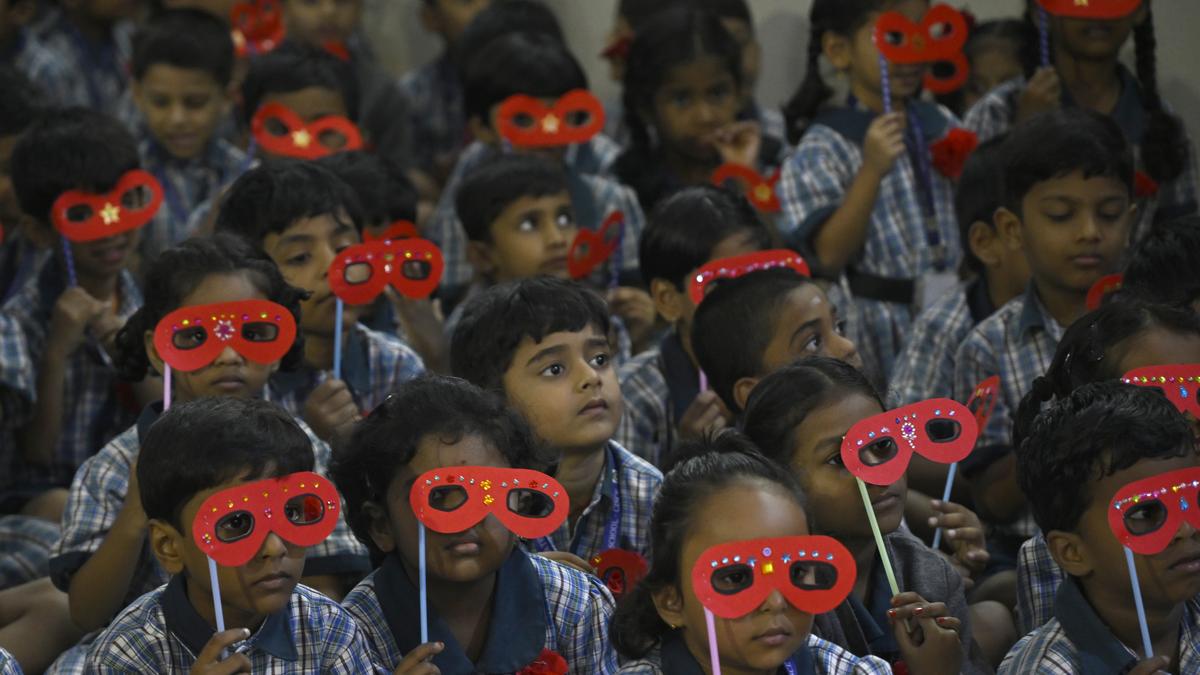Data suggests that the private–government school cost gap is widest at the pre-primary level
| Photo Credit: RAMAKRISHNA G
Data from a recent government survey suggests that the cost of private kindergarten education in India is disproportionately high. Two sets of data from the Comprehensive Modular Survey: Education 2025 point to this conclusion.
First, the cost gap between private and government schools is widest at the pre-primary level — over 20 times — while it narrows considerably at higher levels. Second, within the private system itself, expenditures rise only marginally across successive levels of schooling, in contrast to government schools, where costs increase nearly ninefold, suggesting that a large share of private schooling expenses are front-loaded at the entry stage.
The data includes only those students who reported a non-zero school-related expenditure (labelled as ‘reported’ students). Also, private schools refer to private unaided schools. The survey was conducted in April-June 2025.
The chart below shows the average school expenditure (in rupees) per reported student (figures above bars) by level of education in rural areas. Figures in bold are multiples.
Private kindergarten education costs ₹17,988 per year on average — nearly 22 times higher than in government pre-primary schools (₹823). The private-government school cost gap narrows at higher levels of schooling.
In rural areas, at the primary level, private school education costs about 11 times more than government schools; in middle school, 9.5 times; in secondary, 6 times; and in higher secondary, 4.6 times.
The chart below shows the average school expenditure (in rupees) per reported student (figures above bars) by level of education in urban areas. Figures in bold are multiples.
Private kindergarten education costs ₹26,188 per year on average — nearly 16 times higher than in government pre-primary schools (₹1,630). In urban areas too, the private-government school cost gap narrows at higher levels of schooling.
In urban areas, at the primary level, private school education costs about 11 times more than government schools; in middle school, 10 times; in secondary, 8 times; and in higher secondary, 6 times.
State-wise data reveal even wider gaps at the pre-primary level. In urban Karnataka, private kindergarten education costs ₹49,271 per year on average — nearly 72 times higher than in government schools (₹688). This is the highest multiple among all States in urban areas.
The chart below shows States with the widest private-government school cost gap at the pre-primary level. Figures are multiples.
The gap is over 40 times in Odisha, and over 35 times in Rajasthan, Maharashtra, and Gujarat. In rural areas, the gap was highest in Chhattisgarh (over 100 times), followed by Andhra Pradesh and Tamil Nadu (over 40 times each), and Gujarat and Karnataka (over 35 times). Notably, Gujarat and Karnataka appear in both the rural and urban lists.
The figures presented till now illustrate what was noted before — that the private–government school cost gap is widest at the pre-primary level. The chart below shows the difference in average expenditure per reported student between pre-primary and higher secondary levels
Average school expenditure per ‘reported’ student between pre-primary and higher secondary levels in India is compared in the chart above. In government schools, costs rose from ₹823 per year at the kindergarten level to ₹7,308 in higher secondary in rural areas — a nearly nine-fold increase. In urban government schools, the rise was more modest, at about 4.7 times.
In contrast, in private schools, costs increased from ₹17,988 per year at the kindergarten level to ₹33,567 in higher secondary in rural areas — less than a two-fold rise. The increase was similarly under two times in urban areas in private schools. The figures in the above chart show that cost increases across levels are marginal, suggesting a possible front-loading of costs.
The data for the charts were sourced from the Comprehensive Modular Survey: Education 2025, released by the Ministry of Statistics and Programme Implementation
Published – September 11, 2025 07:00 am IST
